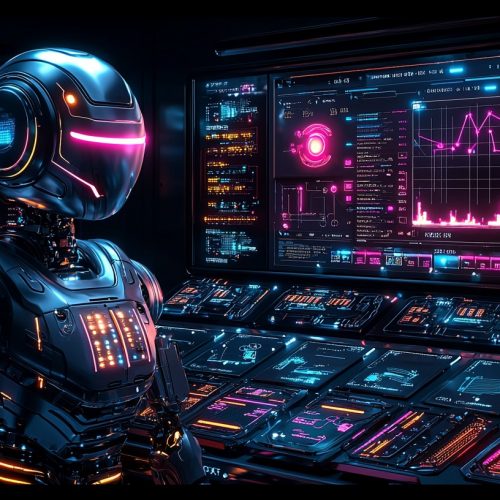AI agents are rapidly transforming industries by automating complex workflows, enhancing productivity, and delivering intelligent solutions. While developers can build AI agents from scratch using languages like Python or JavaScript, this approach is often time-intensive and challenging to scale. That’s where AI agent frameworks come in, simplifying the development process and accelerating innovation.
But what exactly are AI agent frameworks? How do you select the best one for your project? And which frameworks are leading the way? Let’s explore.
Table of content:
- What are AI agent frameworks?
- Core components of an AI agent framework.
- How to choose the right AI agent framework.
- Top AI agent frameworks to consider.
What are AI agent frameworks?
AI agent frameworks are platforms, libraries, or development environments designed to simplify the creation of automated agents. Think of them as toolkits that streamline the process, enabling developers to build intelligent, task-oriented agents faster and more efficiently. These frameworks come equipped with pre-built components and structures, eliminating much of the complexity of building agents from the ground up.
Core components of an AI agent framework
AI agent frameworks provide the foundational tools necessary to develop, deploy, and manage AI agents. Here are their key components:
- Architecture: Defines how agents interact with systems, users, and each other, supporting single-agent logic or multi-agent collaboration.
- Memory: Allows agents to retain context over time, using short-term (session-based) and long-term (persistent) memory to improve relevance and continuity.
- Models: At the core of every agent is a large language model (LLM), which enables understanding, reasoning, and decision-making.
- Toolkits: Includes functional tools like APIs, code interpreters, and search engines to empower agents to execute real-world tasks.
- Orchestration Layer: Manages task flows, resource allocation, and agent coordination, particularly in multi-agent setups.
- Integrations: Ensures seamless connectivity with platforms like LangChain, OpenAI, Azure, Slack, and more, allowing agents to operate within your existing ecosystem.
How to choose the right AI agent framework
When selecting the best AI agent framework for your project, consider these factors:
1. Complexity
AI agent frameworks range from low-code platforms for non-technical users to advanced options requiring programming expertise. Choose a framework that aligns with your team’s skill set and the complexity of your project.

2. Data privacy and security
Data privacy is critical, especially when deploying AI agents that interact with sensitive information. Look for frameworks that offer robust encryption, access control, and compliance with regulations such as GDPR or HIPAA. Consider whether the framework processes data on-premises or in the cloud.
3. Ease of use
A user-friendly framework with intuitive interfaces, clear documentation, and built-in tools can significantly reduce development time and errors. This is particularly important for startups or fast-paced teams looking to achieve results quickly.
4. Seamless integration
Your AI agents will need to work within your existing systems. Ensure the framework supports integration with tools like Salesforce, Slack, internal databases, or third-party APIs. A well-integrated framework saves time and ensures smooth operations.
5. Performance and scalability
As your needs grow, your AI agents must handle more users, data, and tasks. Choose a framework that performs well under load and scales easily, whether through additional resources per agent or by deploying more agents.
Top AI agent frameworks to consider
Here’s a rundown of some of the most popular AI agent frameworks available today, along with their key features:
1. AutoGen
Developed by Microsoft, AutoGen is an open-source framework for creating multi-agent systems powered by LLMs. It enables seamless collaboration between autonomous agents and humans for solving complex tasks.
Key features:
- Multi-agent collaboration for tackling complex workflows.
- Easy LLM orchestration with support for OpenAI, Azure models, and more.
- Cross-language support for Python and .NET.
- AutoGen Studio: A no-code interface for rapid prototyping.
2. CrewAI
CrewAI is an open-source framework designed for autonomous multi-agent systems. Inspired by real-world team dynamics, it assigns specialized roles to agents and enables efficient task execution.
Key Features:
- Role-based agents for specialized tasks (e.g., Researcher, Writer).
- Flexible tool integration with APIs and external services.
- Hierarchical workflows for seamless task delegation.
- Visual Agent Builder for no-code agent creation.
3. LangChain and LangGraph
LangChain is a versatile framework for building LLM-driven agents, while LangGraph builds upon it by introducing state machine logic for complex workflows.
LangChain features:
- Modular components for building chains, agents, and memory systems.
- Reusable prompt templates for consistent LLM interactions.
- Conversational context management for enhanced coherence.
LangGraph features:
- Graph-based workflows with state machine logic.
- Robust state management for complex interactions.
- Human-in-the-loop functionality for oversight and adjustments.

4. LLaMA
Developed by Meta, LLaMA is a series of open-source LLMs optimized for efficiency and scalability across a range of tasks.
Key features:
- Extended context length (up to 128K tokens) for handling complex inputs.
- Advanced capabilities for reasoning and coding tasks.
- Built-in safety measures, including Llama Guard and Prompt Guard.
5. Semantic Kernel
Microsoft’s Semantic Kernel is an open-source SDK for integrating LLMs into applications using languages like C#, Python, and Java.
Key features:
- Multi-language support for diverse development needs.
- Plugin architecture for modular and reusable design.
- Memory management for maintaining context across interactions.
- Seamless integration with AI services like OpenAI and Hugging Face.
6. Rasa
Rasa is an open-source framework for building conversational AI assistants and chatbots. It enables developers to create dynamic, context-aware dialogues.
Key features:
- Rasa NLU for intent and entity extraction.
- Rasa Core for machine learning-based conversation flow management.
- Custom actions and API integration for advanced functionality.
- Multi-channel and multilingual support for diverse deployment needs.
7. OpenAI Swarm
Swarm is an experimental, lightweight framework for orchestrating multi-agent systems developed by OpenAI. It focuses on simplicity and flexibility.
Key features:
- Multi-agent collaboration for complex tasks.
- Stateless architecture for easy management.
- Client-side operation to reduce server load and latency.
8. N8N
N8N is an open-source workflow automation platform that connects and automates apps and services with a visual interface.
Key features:
- Drag-and-drop workflow builder.
- 400+ built-in integrations for seamless connectivity.
- Customizable nodes for extended functionality.
- Self-hosting options for full control over data and infrastructure.




